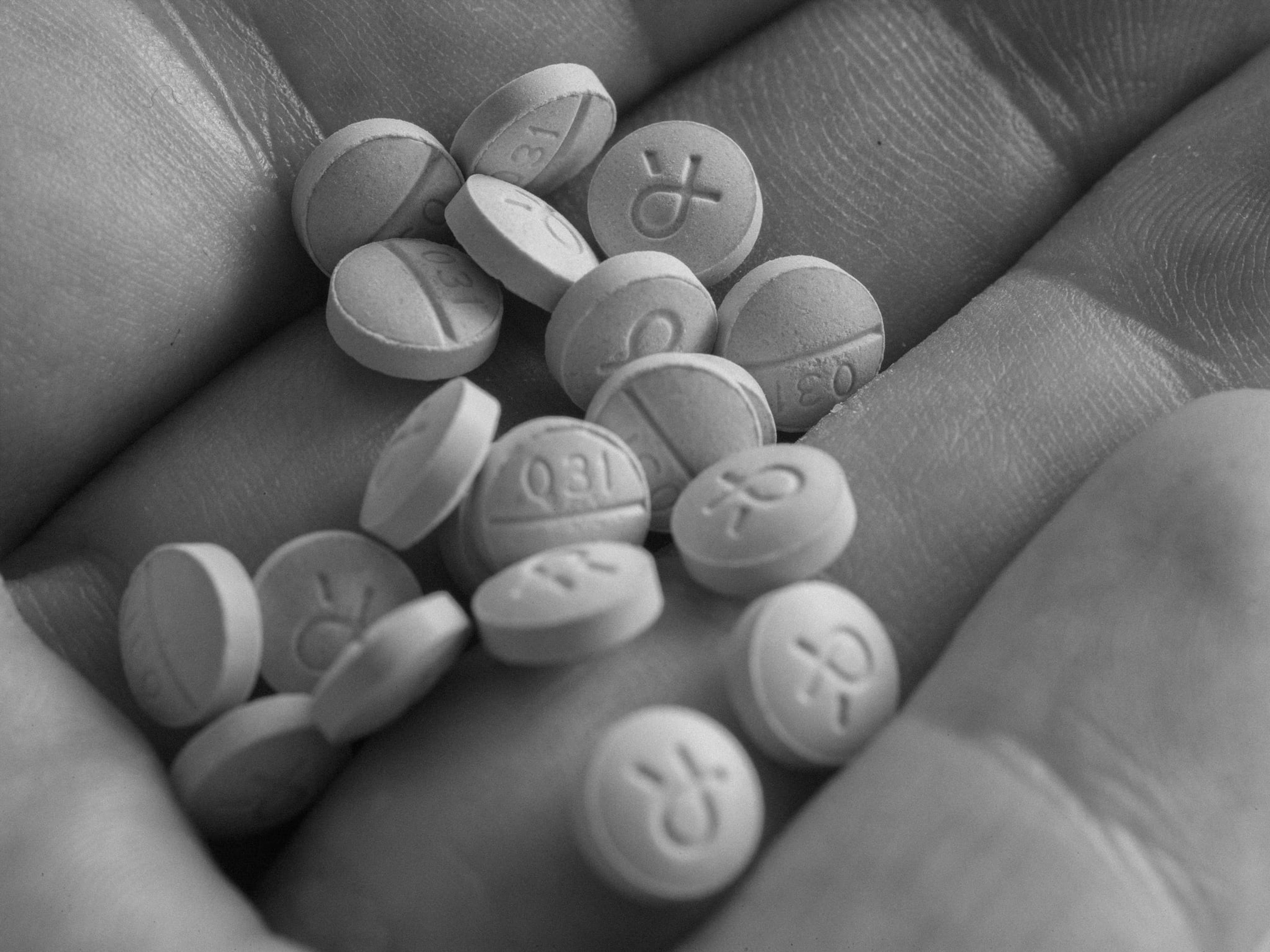Taking Action: Multi-Pronged Approach Fighting Opioids in Northern Michigan
Julie Bitely
| 5 min read

In her work as a certified prevention specialist, Laurie Ames has heard the negative labels people place on those struggling with an addiction to opioids. When she hears remarks about “pill heads” and “junkies” she thinks, “You’re talking about my son.” Thankfully, a fourth year of recovery is under her son’s belt, but for Ames, sparing other parents from the heartache of watching a loved one suffer is a mission. “His story is no different than countless, thousands and thousands of young people,” she said. “He is the reason I am in the position I’m in.”
Up North Prevention
Ames works for Up North Prevention (UNP), a substance abuse prevention initiative under the umbrella of Catholic Human Services, Inc., which provides outpatient substance abuse treatment to about 5,600 people per year throughout 21 counties in northern Lower Michigan. UNP was created about eight years ago to coordinate resources and to develop a northern Michigan response to substance abuse issues. The organization recently received a $70,000 grant from Blue Cross Blue Shield of Michigan, the Blue Cross Blue Shield of Michigan Foundation, the Michigan Health Endowment Fund, the Community Foundation for Southeast Michigan and the Superior Health Foundation as part of the Taking Action on Opioid and Prescription Drug Abuse in Michigan by Supporting Community Responses initiative. The grant covers work that will take place in the counties of Alcona, Alpena, Iosco, Montmorency, Ogemaw, Oscoda and Presque Isle.
Multi-Pronged Approach to Address an Epidemic
Ames is working with fellow UNP certified prevention specialist Donna Hardies to administer the grant funding, which will be used in four key ways:
- Collecting and disseminating data. An easily accessible dashboard will be established for the seven counties covered by the grant. An epidemiologist is gathering data such as known naloxone saves, overdose deaths at hospitals, opioid prescription rates, medication-assisted treatment rates and more. The goal of the dashboard is to get a clearer picture of the problem, which will help guide the delivery of programs and services based on what communities need most.
“This allows us to gather all that baseline data and be able to keep it up on a yearly basis,” Hardies said.
- Educating medical professionals on best prescribing and treatment practices. One of UNP’s goals is to reduce per capita opioid prescribing. They also want to help doctors better understand the effectiveness of medication-assisted treatment. Hardies said UNP has surveyed health care providers about what they need to know and an upcoming conference in May will be offered free of charge. Physicians will receive continuing education credits for attending.
“They want to do the right thing,” Hardies said of the providers surveyed. Addressing the resistance that some medical professionals have to treating opioid addiction with medication is an important step in helping people effectively recover. “It can happen to anyone,” Hardies said. “The fact that these individuals want to live a productive life and that’s what we’ve seen with some of the successes in the medication-assisted treatment in that they’re able to function again. They’re able to parent. They’re able to be employed.”
- Supplying jails with naloxone. UNP had previously coordinated efforts to distribute naloxone, an overdose-reversing drug, to law enforcement officers to carry. Since that was implemented at the beginning of January 2016, more than 60 saves have been made, but connections with law enforcement made it clear that the life-saving drug was also needed at jails, which have become a sort of de facto detox center. Through grant funding, 40 naloxone kits have been distributed to regional jails.
“Drugs have been around forever and I don’t know if we’ll ever eradicate them,” said Oscoda County Sheriff Kevin Grace. “Overdoses aren’t things we had to deal with years ago.” “This epidemic is causing them to become something they really never have been before,” Ames said. “Our jails need to be equipped as well.” Helping pharmacies set up disposal sites. After an established disposal program pulled out of many northern Michigan pharmacies, Ames said an alternative needed to be identified. Keeping unused opioids in medicine cabinets is one way people sometimes discover the medications and they can also be a temptation for those already dealing with addiction or striving for a healthy recovery. While many law enforcement agencies have disposal sites, Ames said it’s important to give people options. “Not everyone wants to go to a law enforcement agency to take back drugs,” she said. UNP staff are visiting pharmacies to determine what they’re currently doing and what they’d like to offer as far as a way for people to take back unused prescriptions. Grant funding will help pharmacies set up new drop-off sites.
Working to end stigma
Throughout all of UNP’s efforts, breaking down the stigma surrounding opioid use disorder is always top of mind. “People are acknowledging and realizing that addiction is a disease and that we have to be all encompassing in how we treat an individual,” Hardies said. This post is part of our Taking Action series, in which we'll focus on Blue Cross-supported efforts across Michigan to address the opioid epidemic. Check back to find out how other communities are fighting the problem of opioid use disorder and overdose. Learn more about the problem here:
- Beware the Dangers of Keeping Unused Prescriptions
- Learn How Opioid Abuse Affects Michigan Families and Businesses
- Can An Opioid Addiction Be Treated by Another Drug?
Photo credit: Quote Catalog





